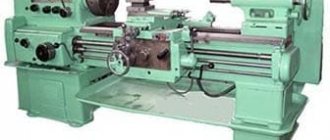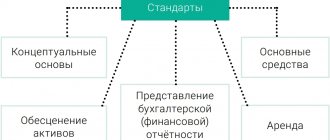Receipt and acceptance for accounting of OS in 1C 8.3
The purchase of fixed assets can be registered in the 1C Accounting 3.0 program with the document “Receipts (acts, invoices)”, selecting the appropriate type (“equipment” or “fixed assets”).
Our team provides consulting, configuration and implementation services for 1C. You can contact us by phone +7 499 350 29 00 . Services and prices can be seen at the link. We will be happy to help you!
For convenience, this document is also located in the “Fixed assets and intangible assets” menu in the form of two items with already established types: “Receipt of fixed assets” and “Receipt of equipment”.
A document with the type “Fixed Assets” is needed to account for those assets that do not require installation and additional costs.
- In the latest editions of 1C Accounting 8.3 (starting from 3.0.45), when using this type of operation, you do not need to additionally create the “Acceptance for accounting of fixed assets” document. All postings are made as receipts with the type of operation “Fixed Assets”, which greatly simplifies the life of accountants.
- The type of operation “Equipment” implies a purchase on accounts: 08.04.1 and 07. Equipment received on account 07 requires further installation. The equipment that arrived to the account on 08.04 does not require installation, and in the future should be accepted for accounting. VAT is reflected on the account on 19.01.
In our example, we will consider the receipt of fixed assets, since this functionality is new. To do this, in the “Fixed assets and intangible assets” menu, select the “Receipt of fixed assets” item. In the list form that opens, create a new document.
As you can see, it combines the details of receipt and acceptance for accounting.
Fill out the counterparty and the agreement in the header of the document. The method for reflecting depreciation expenses will be filled in automatically, but you can adjust it if desired. You can also indicate the location of the OS and the financially responsible person, but these fields are not mandatory. In the event that this object will be rented out, it is necessary to set the appropriate flag.
Next, fill out the tabular part of the document, making sure to indicate the service life for each item in months. If any of the positions has not been created previously, it must be created.
It is very convenient to create a new fixed asset directly from the tabular part of this document. For the created object, the OS accounting group will be set in accordance with the value specified in the header. The depreciation group is filled in when recording a document with a value corresponding to the specified service life.
Inventory of fixed assets
Inventory operations do not differ from standard procedures for goods. The difference, again, is the need to indicate the division. The tabular part of the document suggests not reflecting the quantity, but confirming that it belongs to fixed assets.
In cases where a fixed asset is actually available, but is not reflected in the program, it must be taken into account, and if it is actually not available in the program, the write-off procedure must be carried out.
VAT upon receipt of fixed assets
In this example, VAT was posted, since the document parameters indicate that it is not included in the price. To change this setting, follow the corresponding hyperlink in the document header and check the “Include VAT in price” flag. Then, when posting the document, there will be no movement on the account 19.01.
VAT will be reflected in the purchase book only after an invoice has been registered for this document.
If the receipt was reflected in a document with the transaction type “Receipt of equipment”, then it is additionally necessary to accept the fixed asset for accounting. This document is located in the menu “Fixed assets and intangible assets”, item “Acceptance for accounting of fixed assets”. We will not consider filling out this document, since we filled out all the necessary data, both for receipt and for acceptance for accounting, using the “Receipt of fixed assets” transaction type.
Accounting for gratuitous transfer of fixed assets
Transactions on the gratuitous transfer of fixed assets are reflected in accounting entries provided for in paragraphs 12 and 28 of Instruction No. 174n*(1).
The choice of accounting entries to record the transfer of fixed assets will depend on to whom the property is transferred.
When transferring fixed assets to state (municipal) institutions of the same public legal entity, the following correspondence accounts are applied:
- Debit X 401 20 281 Credit X 101 XX 410 - reflects the transfer of the book value of the accounting object;
- Debit X 104 XX 411 Credit X 401 20 281 - reflects the transfer of depreciation accrued on the object.
More on the topic: Coronavirus: the reason for the cancellation of business trips and events in budgetary institutions
When transferring fixed assets to state (municipal) institutions of another public legal entity (interbudgetary transfer), the following correspondence accounts are applied:
- Debit X 401 20 251 Credit X 101 XX 410 - reflects the transfer of the book value of the accounting object;
- Debit X 104 XX 411 Credit X 401 20 251 - reflects the transfer of depreciation accrued on the object.
The transfer of fixed assets is reflected on the basis of primary documents prepared by the transferring party and the Notice.
Please note the use of KOSGU code 281 in account number 401 20 when reflecting the transfer of fixed assets. This KOSGU code is referred to as “Free transfers of capital nature to state (municipal) institutions.” Using the KOSGU code 281, transactions on the gratuitous transfer of non-financial assets that make up fixed assets within one budget are reflected (clause 10.8.1 clause 10 of Procedure No. 209n * (2)).
If the transfer of fixed assets is carried out by state (municipal) organizations (we usually include unitary enterprises among them), then the following correspondence accounts are applied:
- Debit 2 401 20 284 Credit 2 101 XX 410 - the transfer of the book value of the accounting object is reflected;
- Debit 2,104 XX 411 Credit 2,401 20,284 - reflects the transfer of depreciation accrued on the object.
When transferring fixed assets free of charge to individuals, the following transactions may be used:
- Debit 2 104 ХХ 411 Credit 2 101 ХХ 410 - the transfer of an accounting object is reflected in the amount of depreciation accrued on it;
- Debit 2 401 10 172 Credit 2 101 XX 410 - the transfer of the accounting object is reflected in the amount of its residual value.
Their use is not regulated by Instruction No. 174n, and therefore requires agreement with the founder and financial authority.
Legal regulation
According to Article 689 of the Civil Code of the Russian Federation, under an agreement for gratuitous use (loan agreement), one party (the lender) undertakes to transfer or transfers an item for gratuitous temporary use to the other party (the borrower), and the latter undertakes to return the same item in the condition in which it received it, subject to normal wear and tear or in the condition stipulated by the contract. The rules provided for in Article 607 “Rental Objects” of the Civil Code of the Russian Federation apply to the agreement for gratuitous use.
According to paragraph 2 of the Federal Accounting Standard for Public Sector Organizations “Rent”, approved. by order of the Ministry of Finance of Russia dated December 31, 2016 No. 258n, this standard has been applied since 2018 when reflecting in accounting assets, liabilities, facts of economic life, and other accounting objects arising upon receipt (provision) for temporary possession and use or temporary use of material valuables not only under a lease agreement (property lease), but also under an agreement for free use.
The Lease standard has changed the procedure for recording lease accounting items by both the lender and the borrower.
Previously, objects of movable and immovable property received from the balance holder (owner) of the property for free use were accounted by the borrower on off-balance sheet account 01 “Property received for use” at the cost indicated (determined) by the transferring party (owner), and under the inventory (account) number, assigned to the object by the balance sheet holder (owner) (clauses 333, 334 of the Instructions for the application of the Unified Chart of Accounts, approved by order of the Ministry of Finance of Russia dated December 1, 2010 No. 157n.
According to paragraph 20 of the Lease standard, the accounting object of an operating lease (the right to use an asset) is reflected by the user (lessee) as part of non-financial assets (NFA) as an independent accounting object.
The initial recognition of an operating lease accounting object (the right to use an asset) is made on the date of classification of lease accounting objects in the amount of lease payments for the entire period of use of the property provided for in a lease agreement (property lease) or a gratuitous use agreement with simultaneous reflection of the lease obligations of the user (lessee) (creditor's rent arrears).
In accordance with paragraph 26 of the “Lease” standard, lease accounting items arising under gratuitous use agreements are reflected by the borrower in accounting at their fair value, determined as of the date of classification of lease accounting items using the market price method, as if the right to use the property had been granted for commercial (market) conditions.
Objects of accounting for operating leases on preferential terms (the right to use an asset) by the borrower are reflected taking into account the following provisions of paragraph 27.1 of the “Lease” standard.
Goods for charity
The Cozy House organization provides charitable assistance to an orphanage.
On March 2, a computer was transferred in the amount of 60,000 rubles.
Setting up separate accounting
Since the organization donates goods for charitable purposes, its activities include an operation that is not subject to VAT (clause 12, clause 1, article 149 of the Tax Code of the Russian Federation). This means that you need to set up separate accounting in the program.
To do this, go to the Main menu - Settings - Taxes and reports and in the VAT , check the box Separate accounting of incoming VAT by accounting methods is maintained .
Donation of goods to charity
Create a document Gratuitous transfer .
Filling out the document is similar to the example described earlier, with some exceptions:
- in the Recipient , select the counterparty to whom the computer is being transferred. In this case, there is a specific recipient of assistance, documents will be transferred to him;
- %VAT column - select the option Without VAT ;
- Transaction code - since the transfer is within the framework of charitable activities, enter the code 1010288 . To automatically fill out Section 7 of the VAT return, make sure that the checkboxes are checked in the reference card Transaction codes of Section 7 of the VAT return : The operation is not subject to taxation (Article 149 of the Tax Code of the Russian Federation) ;
- Included in the register of supporting documents.
On the Cost Account , leave the settings as default as in the first example.
Do not issue an invoice.
Postings according to the document
We have looked at how the gratuitous transfer of goods is reflected in 1C 8.3.
Depreciation of fixed assets
Carrying out operations related to calculating the amount of depreciation is carried out using the month closing assistant. This procedure is carried out on a monthly basis, based on the results of the reporting period.
The assistant is accessed through the “Operations” - “Month Closing” menu. In the assistant window, the organization and the time interval of interest are indicated. After which the program will do everything on its own, and the user will only have to follow the instructions of the machine. If the operations are performed correctly, the result will be the appearance of the document “Depreciation and depreciation of fixed assets.”
The depreciation entries will be as follows:
The calculated depreciation amount was 731.45 rubles. The correctness of the calculation is checked by dividing the initial cost by the operating period. In the case under consideration, 44,618.64 of the initial price is divided into 61 months. It turns out 731.45 rubles. The calculation was made correctly.









